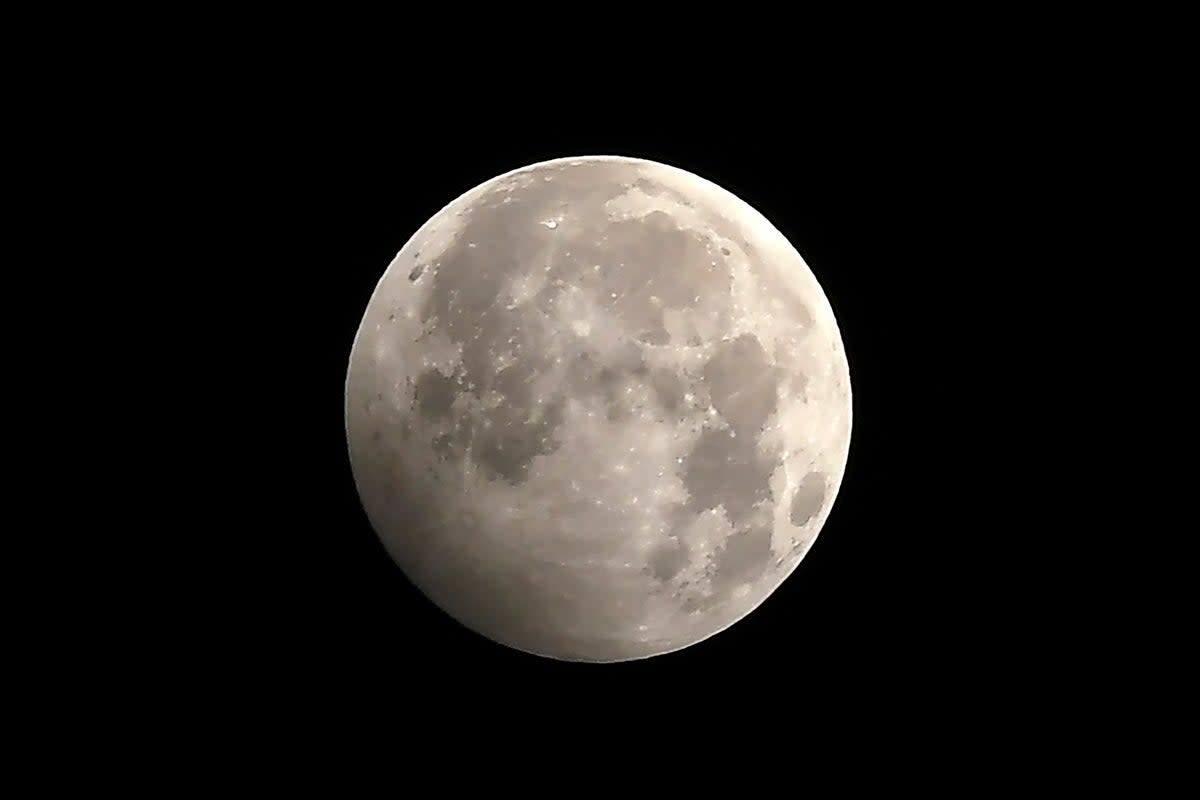When is the next full moon? How to see July's Buck Moon

A new month means we are heading towards a full moon.
Astrologically speaking, the full moon in July is in Capricorn. This moon is all about giving yourself second chances and completing any long-term tasks or objectives you may have, according to Astrology.com. Since Capricorn is an Earth sign, anticipate this full moon to motivate you to organise your belongings, establish boundaries, and pursue your goals.
When the moon is completely illuminated and facing the sun in its orbit around the Earth, you see a full moon.
However, the term full moon is technically incorrect. The moon is only full when the Earth, the sun, and the moon are perfectly aligned – causing a lunar eclipse.
When is the next full moon?
You’ll be able to see the next full moon on Sunday, July 21, known as the Buck Moon.
It represents the newly growing antlers that appear on a buck's forehead at this time of year after they have shed their old set.
In Native American and Celtic traditions, the buck moon is also referred to as the "raspberry moon", "claiming moon", "salmon moon," "wyrt moon", and "herb moon" among others.
Given the frequency of summer thunderstorms, some people call July's full moon the "thunder moon".
What is a full moon?
A full moon occurs when the Earth is positioned directly between the sun and the moon. The side of the moon facing Earth is fully illuminated by sunlight.
This alignment causes the moon to appear as a complete, round disk in the sky, with its entire surface visible from Earth.
Full moons happen roughly once every 29.5 days as the moon orbits around the Earth. They're often associated with various cultural beliefs, myths, and traditions. They can also affect phenomena such as tides and animal behaviour.
How many full moons are there a year and what is a cold moon?
There are typically 12 to 13 full moons in a year, averaging about one per month. This variation is due to the slightly shorter lunar cycle than the 12-month calendar cycle we use.
The "Cold Moon” is a full moon that occurs in December, particularly in the Northern Hemisphere, where December tends to be one of the coldest months of the year.
The name "Cold Moon" comes from the seasonal association with winter and the dropping temperatures during this time. Different cultures have their own names for the full moons based on local climate, seasonal changes, and cultural traditions.
Full moon dates in 2024
January 25
February 24
March 25
April 24
May 23
June 22
July 21
August 19
September 18
October 17
November 15
December 15
What are the names of the full moons?
Full moon nicknames mostly come from Native American culture. Many tribes assigned either 12 or 13 full moons to the year. These names were later adopted by colonial Americans, before entering popular culture.
January
January’s full moon is called the Wolf Moon. It’s named after the howling of wolves, hungry after the lack of food available in midwinter. January’s full moon has other nicknames, including Old Moon and Ice Moon.
February
The full moon in February is called the Snow Moon, after the snowy weather in North America. February’s full moon is also known as the Storm Moon and Hunger Moon.
March
March’s full moon is known as the Worm Moon. Native Americans named this after the worm trails that appeared in the ground after it thawed at the end of winter. It is also called the Chaste Moon, Death Moon, and Crust Moon.
April
April’s full moon is called the Pink Moon — named after an early blooming wildflower. Other cultures call April’s moon the Egg Moon and the Fish Moon.
May
May’s full moon is known by many cultures as the Flower Moon, after the flowers that bloom in spring. It’s also called the Hare Moon and the Milk Moon, among other names.
June
June’s full moon is known as the Strawberry Moon, named after the harvesting of strawberries during this month. In Europe, it’s known as the Rose Moon, while other cultures call it the Hot Moon.
July
The full moon in July is known as the Buck Moon, which got its name from when male deer began to regrow their antlers. It’s also known as the Thunder Moon.
August
The full moon in August is known as the Sturgeon Moon by North American fishing tribes because the fish species appear during this month. It’s also known as the Green Corn Moon and the Red Moon.
September
September’s full moon is called the Full Corn Moon, because this is the time of year when crops are gathered following summer. It’s also known as the Harvest Moon as it is often the nearest full moon to the autumnal equinox.
October
The full moon in October is called the Hunter’s Moon because October is the preferred moon to hunt deer and foxes that cannot hide among crops. It’s also called the Travel Moon and the Dying Grass Moon.
November
November’s full moon is called the Beaver Moon. Some believe it’s named after the time of year Native Americans set up beaver traps, while others believe it comes from the time of year beavers build their winter dams.
December
December’s full moon is known as the Cold Moon due to the cold weather winter brings. It’s also known as the Long Night Moon.


